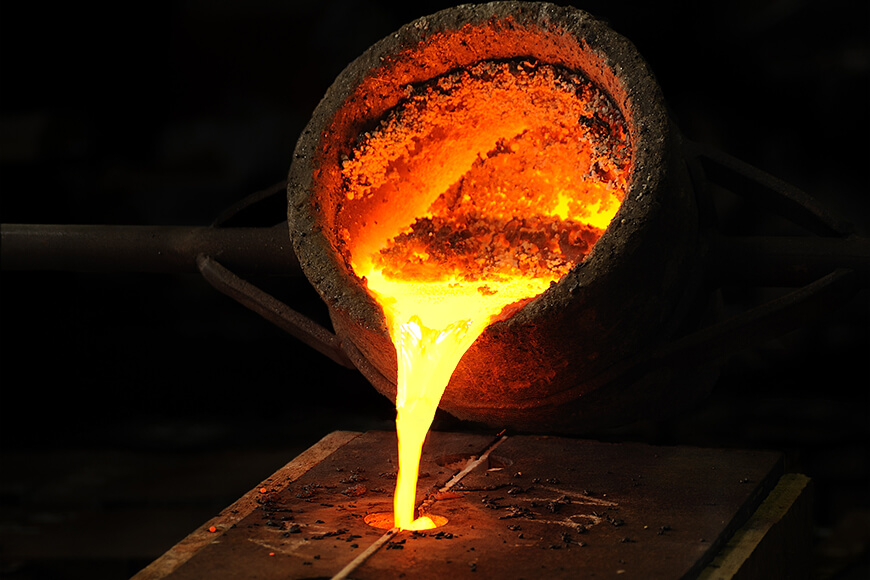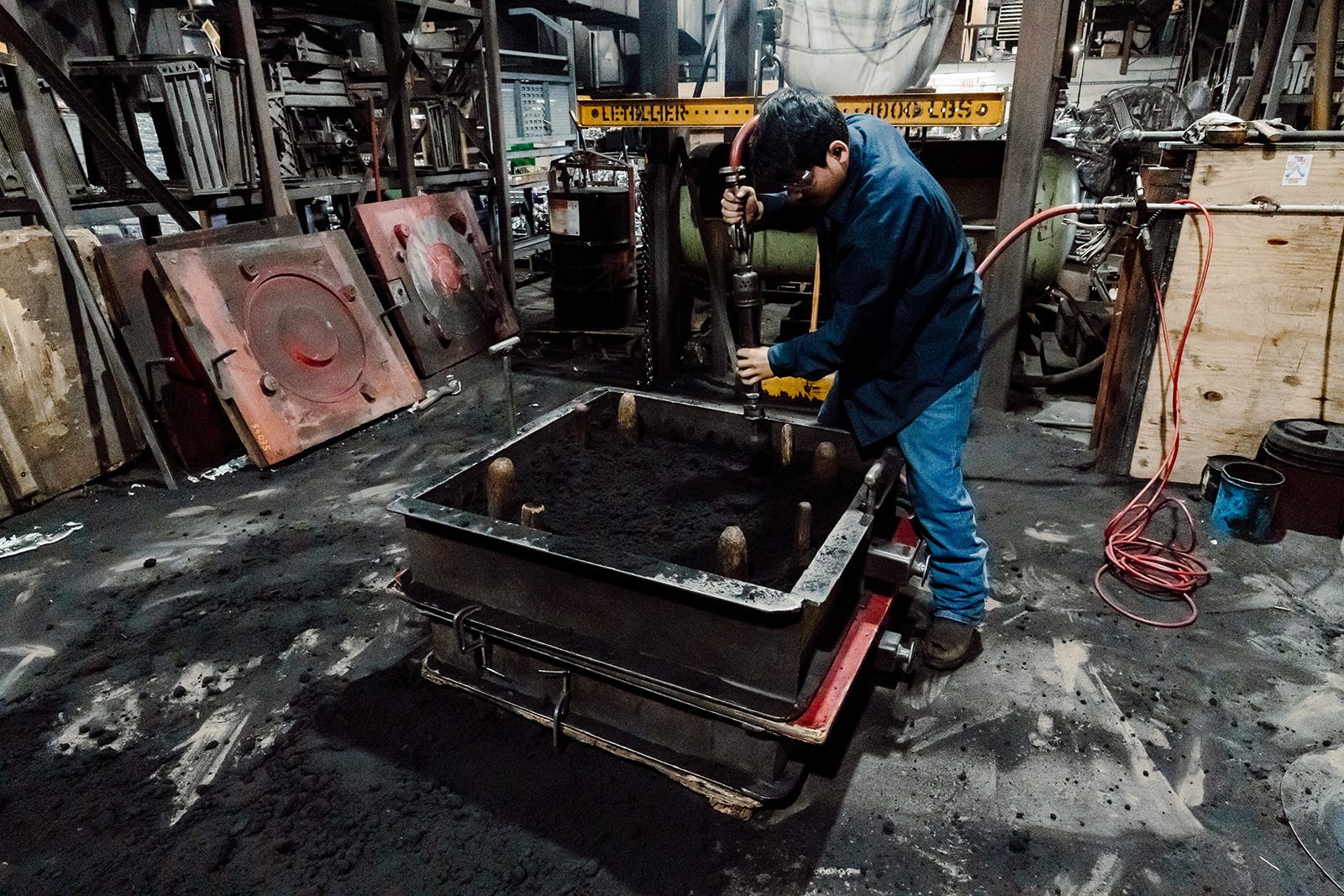How Casting Foundry Technologies Support Global Sustainability Goals
The Effect of Innovation on Performance in the Casting Foundry Industry
The Casting Foundry market has actually experienced notable changes due to technological innovations. Automation and robotics have streamlined procedures, enhancing production prices while reducing mistakes. Furthermore, real-time tracking and data analytics are reshaping decision-making processes, resulting in extra reliable source administration. As these innovations continue to progress, they provide both challenges and opportunities. Recognizing the full impact of these adjustments is vital for industry stakeholders to adapt and grow in a competitive landscape.
The Role of Automation in Modern Foundries

These systems assist in tasks such as mold and mildew creation, pouring, and air conditioning, enabling real-time surveillance and modifications to maximize performance. Furthermore, automation makes it possible for shops to run continually, boosting outcome and minimizing lead times.
The integration of automated solutions additionally sustains far better resource monitoring, as machines can be configured to use materials a lot more properly, decreasing waste. By implementing automation, modern foundries can adapt to fluctuating demand, guaranteeing that they stay competitive in a rapidly evolving industry. Ultimately, automation represents a transformative pressure, redefining traditional Foundry practices and paving the way for future improvements.
Enhancing Top Quality Control Via Innovation
Technology reinvents quality assurance in foundries, ensuring that items meet rigorous market standards. Advanced examination systems, such as laser scanning and 3D imaging, allow precise dimension of cast parts, determining defects at the earliest phases. These devices promote real-time tracking of manufacturing processes, permitting instant adjustments and lessening discrepancies from top quality criteria.
Information analytics plays an important function in quality control by analyzing patterns and forecasting prospective failings, which improves the integrity of the production line. Applying artificial intelligence algorithms enables factories to continuously enhance their top quality guarantee procedures by picking up from historic data
Furthermore, the assimilation of digital twins makes it possible for virtual simulations of manufacturing processes, allowing for comprehensive screening and recognition before physical Casting happens. Jointly, these technological improvements not just raise the quality of cast items yet also strengthen client complete satisfaction and trust fund in the foundry's result.
Decreasing Waste and Power Consumption

In addition, the introduction of 3D printing innovation in mold and mildew creation significantly lowers material waste by enabling for the manufacturing of intricate designs without the requirement for too much machining. Furthermore, energy-efficient tools and sustainable power sources are significantly being adopted, adding to reduced operational expenses and a smaller carbon footprint.
These technologies not just improve operational efficiency however additionally advertise lasting techniques within the Casting Foundry sector, lining up with international efforts to minimize environmental influences and improve source administration.
The Impact of Data Analytics on Choice Making
Information analytics has emerged as a necessary device for improving decision-making procedures in casting factories. By leveraging data collected from numerous phases of manufacturing, factories can identify inefficiencies and locations for renovation. For circumstances, real-time tracking of equipment efficiency permits managers to make enlightened choices relating to maintenance schedules, reducing downtime and maximizing outcome.
Anticipating analytics helps projection demand fads, allowing shops to change production degrees accordingly and lessen excess inventory. This capacity not only simplifies operations yet likewise help in resource allowance, guaranteeing that products are used effectively.
Moreover, data-driven understandings empower administration to evaluate the efficiency of different alloys and products, leading to enhanced product high quality. As factories significantly embrace information analytics, the integration of these understandings into critical decision-making processes leads the means for enhanced functional effectiveness and affordable advantage in the sector.
Integrating Robotics Into the Molding Refine
The combination of robotics right into the molding process uses significant advantages for casting shops. By automating jobs, these systems can minimize human mistake and enhance production rate, leading to extra efficient procedures. As technology developments, the possibility for robotics to transform typical explanation molding techniques becomes increasingly obvious.
Benefits of Robotic Automation
Robotic automation provides substantial advantages in the molding process of casting factories, boosting both performance and accuracy. By making use of robot systems, shops can attain greater production prices as a result of the regular rate and integrity of makers. These robots can carry out repetitive tasks with minimal downtime, which streamlines procedures and optimizes outcome. Additionally, the integration of robotics enables better versatility in production, making it possible for shops to quickly adjust to differing demands and intricate styles. Moreover, robotic automation adds to enhanced workplace safety by lowering the requirement for human intervention in unsafe atmospheres. Ultimately, the unification of robotics in the molding process leads to maximized process, reduced functional expenses, and enhanced item quality in the Casting Foundry market.
Reducing Human Mistake
Human skill and instinct have generally played essential functions in the molding process, integrating robotics substantially reduces the danger of human mistake. Robotics offers accuracy and uniformity, guaranteeing that each mold and mildew is created with specific specifications, minimizing variability triggered by exhaustion or interruption amongst human operators. With sophisticated sensors and software program, robot systems can discover anomalies and make real-time modifications, even more decreasing the possibility of problems. The automation of repetitive tasks allows human workers to concentrate on more complex duties, enhancing overall high quality control. Furthermore, the execution of robotics facilitates a more systematic approach, causing standardization throughout production processes, which is important for preserving high-quality outputs in the Casting Foundry market.
Enhancing Production Speed
Integrating robotics right into the molding process not just minimizes human mistake however also substantially enhances manufacturing rate within casting shops. By automating recurring jobs, robotics can operate continuously, allowing for higher result prices compared to conventional approaches. Their precision guarantees that mold and mildews are continually loaded, lessening downtime triggered by problems or adjustments. Furthermore, robotics enable rapid adjustments in manufacturing lines, accommodating numerous layouts without significant delays. Therefore, factories can respond extra quickly to market demands, raising their one-upmanship. The integration of innovative robotics modern technologies improves the operations, enhancing source allotment and reducing labor expenses. In general, the fostering of robotics in molding procedures considerably propels performance and productivity in the Casting Foundry sector.
Conquering Obstacles in Innovation Fostering

Future Trends in Casting Foundry Modern Technology
What developments exist ahead for the Casting Foundry sector? The future of casting Foundry technology is positioned for considerable makeover with advancements such as 3D printing, automation, and expert system. These technologies guarantee to enhance accuracy and lower waste in the visit this website Casting process. 3D printing makes it possible for the production of complicated geometries that traditional techniques can not achieve, while automation improves procedures, increasing general efficiency. In addition, the integration of AI and artificial intelligence will facilitate predictive maintenance, enhancing tools performance and lessening downtime.
In addition, the pattern in the direction of sustainable methods is anticipated to form the industry, with a concentrate on environmentally friendly products and processes. Digital twins, which replicate real-world operations, can also end up being commonplace, enabling shops to examine circumstances and make data-driven choices. Jointly, these improvements are established to see this page redefine the Casting Foundry landscape, driving efficiency and sustainability while satisfying the progressing demands of various industries.
Frequently Asked Concerns
How Does Modern Technology Influence Employee Responsibility in Foundries?
Innovation substantially reshapes employee roles in shops by automating recurring jobs, improving precision, and necessitating brand-new ability. Employees progressively concentrate on supervising advanced equipment and data evaluation, bring about a shift in job duties and called for proficiencies.
What Are the Costs Connected With Carrying Out New Technologies?
The expenses of implementing brand-new innovations encompass first financial investments, training expenses, ongoing upkeep, and prospective disruptions throughout transition. Organizations should thoroughly evaluate these monetary elements to guarantee successful integration and lasting lasting benefits.
Just How Can Tiny Factories Adopt Innovation Affordably?
To embrace innovation economically, small shops can check out gives, partnerships, and inexpensive solutions. Step-by-step upgrades, worker training, and leveraging existing resources also boost effectiveness without substantial monetary pressure, cultivating gradual technical integration right into operations.
What Skills Are Required for Employees in Tech-Driven Foundries?
Workers in tech-driven factories require abilities in data evaluation, device procedure, and software efficiency. In addition, flexibility to new devices and technologies, analytical capacities, and partnership with design groups are necessary for success in this developing atmosphere.
Just How Does Technology Effect Safety in Foundries?
Innovation substantially enhances safety and security in foundries by automating hazardous tasks, employing advanced monitoring systems, and helping with real-time communication. These advancements minimize work environment mishaps and enhance emergency situation action, eventually promoting a much safer setting for all employees.
Modern technology transforms top quality control in shops, making sure that products satisfy strict market standards. Developments such as automated molding systems and advanced melting technologies make it possible for shops to enhance material usage and lower power demands. As the Foundry industry significantly identifies the benefits of emerging modern technologies, getting rid of difficulties in technology fostering ends up being vital for enhancing functional effectiveness. Technology substantially improves employee duties in factories by automating repetitive jobs, enhancing accuracy, and requiring new ability sets. Modern technology significantly boosts security in foundries by automating harmful tasks, using advanced surveillance systems, and helping with real-time interaction.